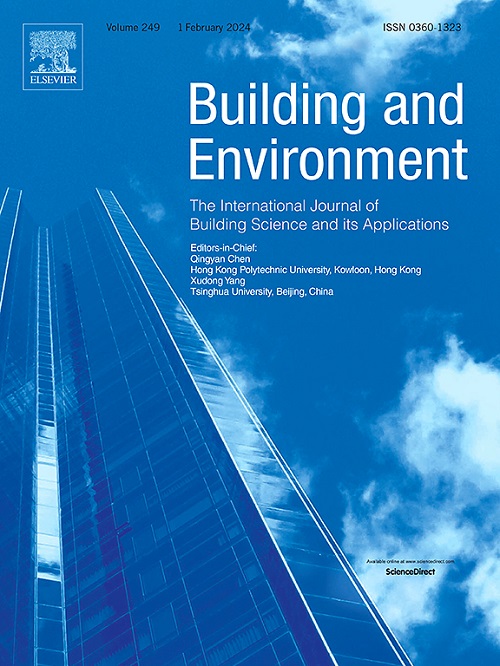Natural light control to improve awakening quality
IF 7.1
1区 工程技术
Q1 CONSTRUCTION & BUILDING TECHNOLOGY
引用次数: 0
Abstract
Sleep is closely linked to residential environmental factors such as light, noise, and temperature. Addressing sleep problems requires realistic contributions from both architectural and medical fields. Exposure to moderate light before waking positively impacts awakening quality. Individuals are beginning to use Internet of Things (IoT) devices, like motorized curtains, to introduce natural morning light into bedrooms while avoiding nighttime light. This study aims to explore the effectiveness of controlling natural light via window equipment to improve awakening quality. In a crossover randomized controlled trial, sleepiness, alertness, and fatigue were measured in 19 participants (nine females) after waking under three different natural light exposure conditions: IA, natural light exposure for 20 min before waking; IB, natural light exposure from dawn to waking; CC, no natural light exposure before waking. The effects of each condition on awakening quality were analyzed. The results showed no statistically significant differences in cumulative or maximum illuminance between IA and IB. Objective alertness and subjective sleepiness in the IA and IB were significantly better than in the CC. Objective sleepiness was significantly lower in IA compared with both IB and CC. These findings suggest that natural light control through window equipment can improve awakening quality; however, excessive or early exposure could increase mid-waking time, potentially harming awakening quality. This study presents an effective method (IA) for natural light control and offers interdisciplinary insights into architecture and sleep research in real-world settings.
求助全文
约1分钟内获得全文
求助全文
来源期刊

Building and Environment
工程技术-工程:环境
CiteScore
12.50
自引率
23.00%
发文量
1130
审稿时长
27 days
期刊介绍:
Building and Environment, an international journal, is dedicated to publishing original research papers, comprehensive review articles, editorials, and short communications in the fields of building science, urban physics, and human interaction with the indoor and outdoor built environment. The journal emphasizes innovative technologies and knowledge verified through measurement and analysis. It covers environmental performance across various spatial scales, from cities and communities to buildings and systems, fostering collaborative, multi-disciplinary research with broader significance.
 求助内容:
求助内容: 应助结果提醒方式:
应助结果提醒方式:


